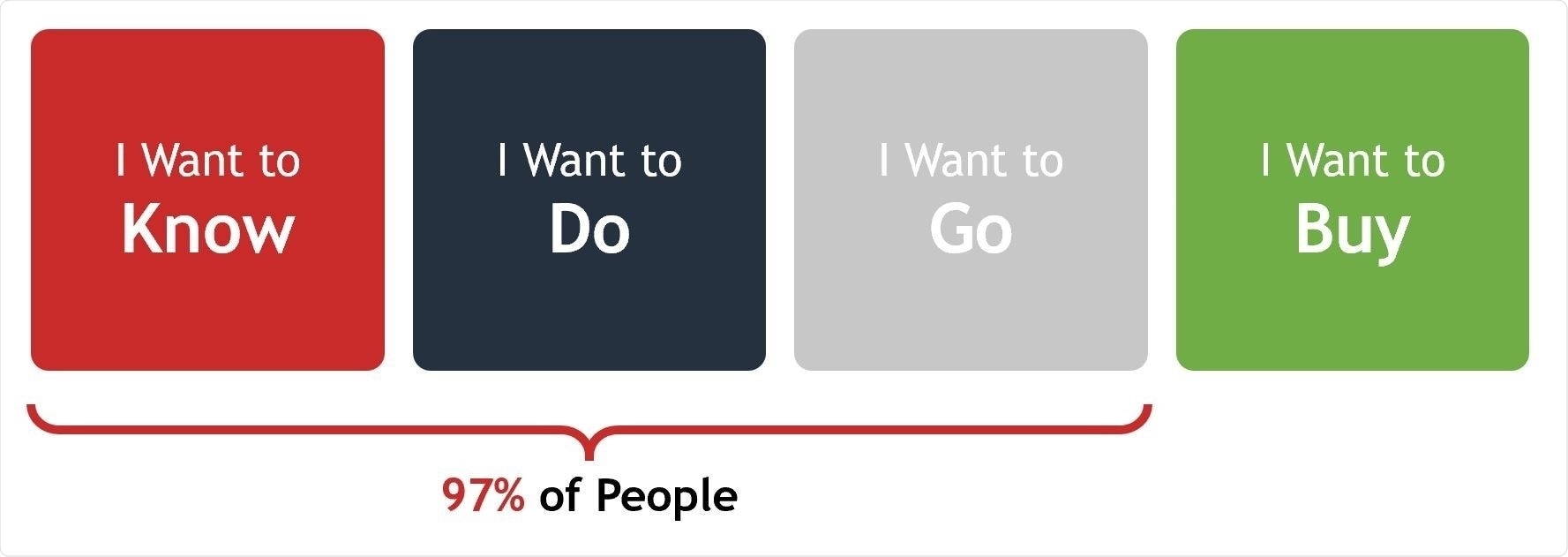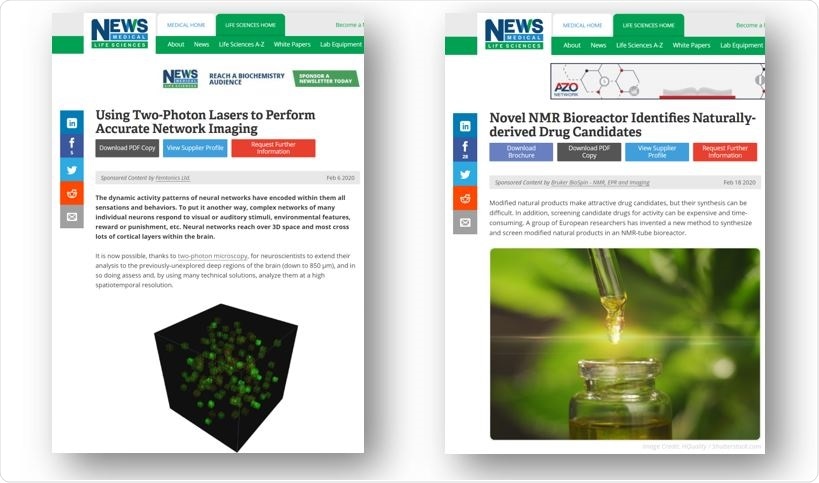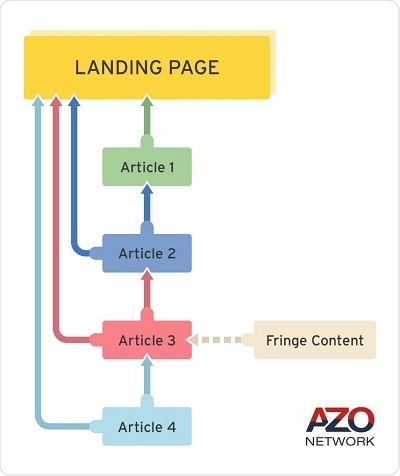
Life science content marketing requires a keen analytical approach. Distilling technical content into web-ready marketing collateral that will rank well, engage the desired audience, and ultimately generate sales leads is a challenge for many life sciences companies.
At AZoNetwork, we have been in the business of sharing science, medical, and technology stories for over twenty years; this approach is second-nature to us.
This article discusses three key tactics all life science marketing strategies should use for content marketing.
Ask About Life Sciences Marketing
Create life science application content
Creating application-focused content is not a new concept for scientific companies. Proving your credentials requires demonstrating your product or techniques in the intended application. However, few businesses successfully communicate this message. Far too often, they are drawn into product comparison wars with their competition and forget about what might resonate with their target audience.
Creating compelling, well-optimized application content on blog posts is critical to driving relevant traffic to your website and converting them into sales leads.

Figure 1. Google Micro-Moments
Consider the sales cycle of your life science equipment: the likelihood is it’s a long one. The truth is that B2B customers are not like B2C consumers, where a one-click buying process removes most of the friction from the buyer's journey. Life science digital marketing must consider application content to address the 97% of people not yet in the buying stage that fit their buyer persona.
AZoTopTip
Write a list of all the industries you serve. Next, note down all the problems your solutions solve in those industries. This will give you the two main sections to a series of titles with a specific application focus.
In Figure 2. you can see how this tip works in practice. The industry is pharmaceutical, and the problems are the expensive and time-consuming process of screening drug candidates. All you need to do is match your solution, which in this case is NMR, and there you have it: a complete application title ready to go. Notice that there is no mention of the product in the title. Instead, the title focuses on the problem and solution to address the questions asked by people not yet ready to buy.
In 2015, Google identified four categories of intent that could underlie a search query at every stage in the digital consumer journey: I want to know, I want to do, I want to go, or I want to buy (see figure 1.)
Well-optimized application content on your website blog is a great way to address individuals still researching a solution to their problem. This is especially true when talking about technical products where detail is a critical component of the eventual sale.

Figure 2. Application content examples on News-Medical.net
Engage in video for life science content marketing
Video content covers much more than those dry YouTube channels talking about how to set up X & Y or the features of product Z. Video offers technical industries the opportunity to tell their story engagingly. Video content is especially engaging for your social media platforms.
What types of videos exist for modern life science content marketing managers?
Here are just a few key types you should consider:
- Thought-leadership videos
- Testimonial videos
- Process videos
- Infographic 2D animation videos
- Product videos.
Two videos every life science company should have or aim to produce are thought-leadership videos and testimonial videos.
Thought-Leader Videos
Thought-leadership aims to establish your business and people as thought-leaders in your industry. We all have people that we would identify as leading the way in our industry. The question becomes, how can a company translate thought-leadership into usable content? The answer is people.
It’s no surprise that life science companies have many experts working on product development. The key is to get those experts to share their knowledge about the industry problems, challenges, and how they can solve them.
You can achieve this with a simple interview with key personnel discussing how your underlying technology can address the broader industry problems, building trust in your products and services.
Testimonial Videos
The second source of valuable thought-leadership is your customers.
Identify your most valued customers. Ask yourself why they chose you to solve their problem?
Most of your customers will jump at the opportunity to talk about their work, increasing their brand awareness in the life science sector. This is especially true if your customers work in R&D or Labs. Asking your customers to talk about their research and how your system supports that research is a great way to position yourself as a thought-leader in the industry.
Life science content marketing is not immune to SEO
Search engine marketing is your most significant opportunity to connect with your audience. This is a fact all marketing teams face and is why life science marketing teams cannot ignore the importance SEO plays in their content marketing strategy and marketing campaigns.
Internal linking
Many company websites in the life sciences industry sit on a wealth of valuable content. The problem is how accessible it is to visitors, Google, and your target market.
They are often locked away in PDFs or hidden behind gated forms. Although there is a place for gated content in a lead generation strategy, it is worth breaking out some of the value here to help increase your rankings and support already strong keywords. Doing this will only help serve a long-term lead generation strategy by continuing to foster quality engagement on your website.

Figure 3. AZoNetwork’s Internal Linking Framework
Figure 3. is an infographic of our Internal Linking Framework which should help explain the basic link-building process around your website. It demonstrates how an optimized linking structure should work with your website content.
When improving or maintaining your target keyword pages, you must provide relevant internal links from related content. Each content piece should flow to the next most relevant article and back to the target keyword landing page through clear calls to action.
This internal linking structure will help Google understand that more relevant pieces of content support that main landing page and improve the overall UX of your website. Google uses these as ranking factors when deciding how relevant a page is to any search inquiry.
A well-optimized linking strategy for your life science content marketing is fundamental when you consider that most content marketing for life sciences is of a technical nature. Taking this approach will help maximize your opportunity to convert sales leads and foster more valuable conversations.
View our Life Science audiences